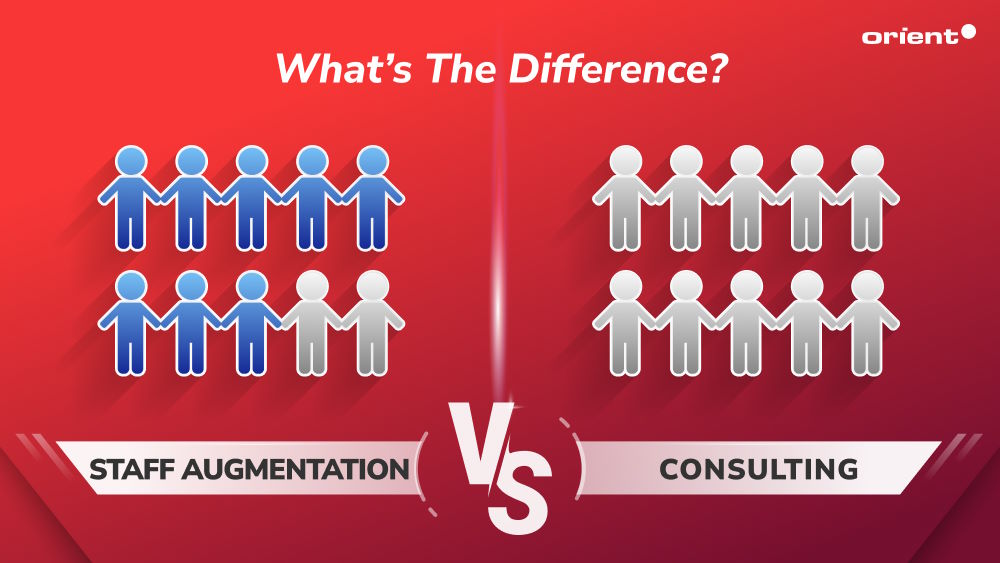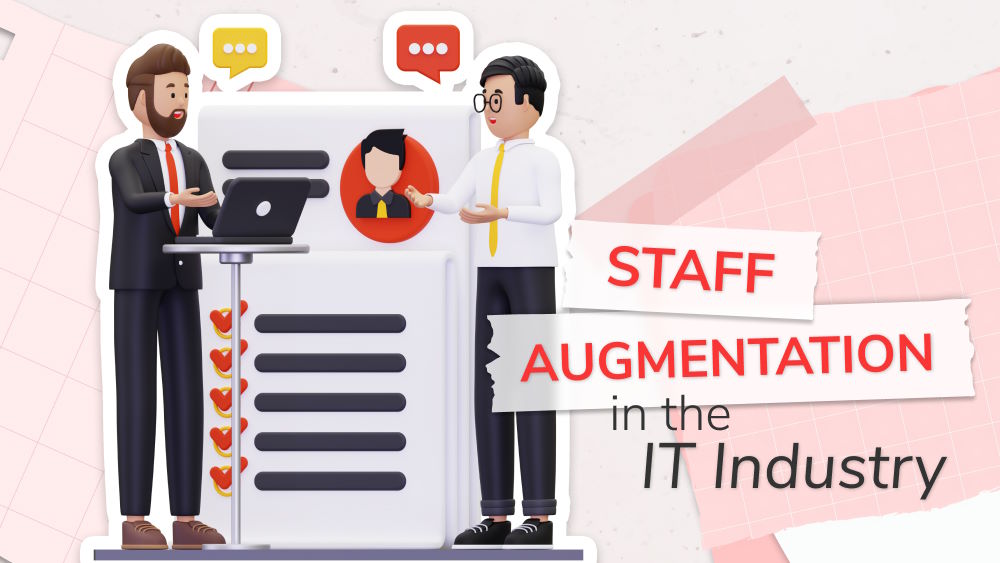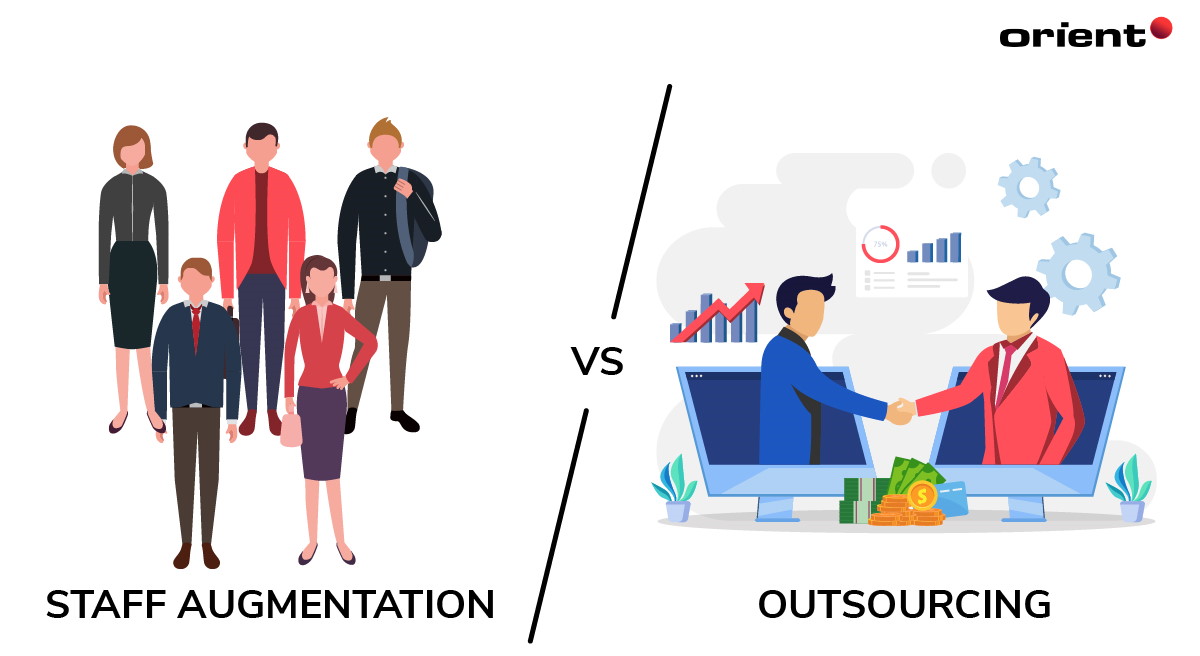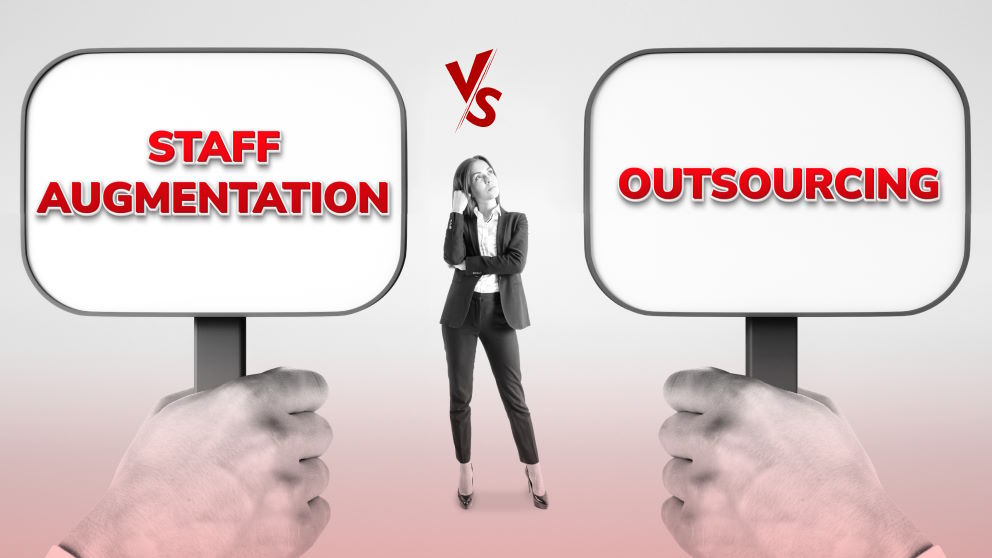IT Staff Augmentation vs. Consulting: What’s the Difference?

Content Map
More chaptersWhen it comes to looking for your software development services, you have a lot of options.
Do you hire new permanent employees to expand your existing in-house team? Or would it be faster and cheaper to outsource to a few temporary workers? What if you need a broad range of specialist skills at once? Then would it be better to approach a project-based consulting agency?
The correct answer depends on a wide range of factors. This includes the skills and capabilities of your existing in-house team, what skill shortages you currently face, the unique requirements of your project, your short and long-term goals, the ideal outcomes you hope to achieve, and most importantly, your budget. Together, these deciding factors have a huge influence on what the right choice is for your business.
Let us help you understand the differences between staff augmentation vs. Consulting to make an informed hiring decision. Each hiring approach has its own pros and cons, and it is worth knowing what they are before you commit to your decision. This way, you will find the process more streamlined and the outcome satisfactory.
Staff augmentation vs consulting: What is staff augmentation?
Staff augmentation is a simple concept to understand. It is when a company hires one or more third-party specialists to complete a project for their company.
These augmented staff are typically hired on a temporary basis. They are only paid for the hours they put in with no usual employee benefits like sick leave and paid holidays. For this reason, the hourly rate for staff augmentation is usually higher than if you were to hire in-house, but you save money by not paying for employee benefits.
Augmented staff are also typically hired for projects where the guidelines, parameters, and expectations are already laid out. They don’t actually, bring anything ‘new’ to the table, at least in terms of the project scope. The hiring company has taken care of that part.
Therefore, the augmented staff are quickly brought on board, instructed on the project scope and expectations, and ingratiated into the current in-house team to complete the project.
When it comes to staff augmentation vs. consulting, the two are quite different. Compared to staff augmentation, project-based consulting services usually have a more hands-on approach to a project. They are brought on to brainstorm, establish guidelines, define different workflows and procedures, and then follow those parameters to complete the project.
Advantages
- Ideal for companies that need to quickly scale their in-house team with more or new skill sets.
- More cost-effective than hiring a project-based consulting agency.
- Less commitment and risk than hiring new permanent in-house employees.
- There is no need to spend resources or time on training for staff augmentation – they already have the specialist or generalist skills ready to go.
- Augmented staff work in tangent with your existing workflow, not drastically changing it.
Disadvantages
- It can be hard to ingratiate augmented staff into your in-house team.
- Augmented staff may not work in a manner that complements your overall vision.
- A wide variety of cost and skillset differences between staff augmentation, making it hard to pick out the best of the bunch in a heavily crowded market.
- The in-house team may resent the presence of augmented staff.
Staff augmentation vs consulting: What is project-based consulting?
Project-based consulting agencies typically provide a wide range of services under one roof, from conceptualizing and project planning, through staffing, project management, and post-launch support.
They are an ideal choice for businesses that need help with establishing the guidelines of their project, determining the skills and capabilities they need, and getting the required resources to deliver the project goods. Therefore, consulting agencies play a much larger role in determining the scope and vision of a project compared to staff augmentation, who typically join a project once the parameters are already established.
In addition to this, project-based consulting services provide ongoing supervision, feedback, and a high level of organizational adaption. This means that consulting agencies usually have a very specific way of providing the services they offer. While there is some level of flexibility, they typically have set service packagers and ways of delivering those services to their clients.
They also have the capability to take onboard multiple clients at once, as opposed to just servicing a select few clients. This can make it harder for a hiring company to get immediate support and feedback. The agency may have to prioritize other clients before they can get to you.
Of course, some agencies may be better equipped than others to overcome those challenges, providing more consistent customer support.
Advantages
- A wider range of specialist and generalist skills through one convenient provider
- Able to assist with the planning, conceptualization, and execution of a project from start to end.
- Consulting services help take the burden off your existing in-house team, so that you can focus on what you do best – instead of dealing with smaller, non-core business duties.
- Consulting services typically employ experienced project managers, who will ensure the delivery of your project is streamlined every step of the way.
Disadvantages
- Typically, more expensive than staff augmentation due to their broader range of skills and capabilities.
- Since consulting services often serve multiple clients at once, they may not be as readily available as you like.
- Most consulting services have a very fixed way of providing the services they offer, so their one-size-fits-all approach may not work for you.
How to choose between staff augmentation vs project-based consulting
Which options are suitable for you depending on your unique requirements.
IT staff augmentation is ideal for smaller projects where you need temporary staff with specific skills that are readily available. While consulting services are better suited for projects where you need many types of specialists and generalists, as well as help with planning and project management.
You also need to consider what you can afford with your budget. Is the higher hourly rate minus the employee benefits of staff augmentation the most cost-effective choice? What would it cost to receive similar services and results from a project-based consulting agency? Compare the two to decide which option provides better value for money.
Of course, you should also consider what the best fit for your company culture is. Will your team be receptive to augmented staff being brought into the fold? If not, what can you do to ease their concerns and ensure the collaboration between your in-house and augmented staff goes smoothly?
Encourage your in-house team to share their thoughts and opinions. This will help you secure augmented staff that not only fit your unique requirements but are also likely to get along with your in-house. By reducing the risk of conflict, you have a much better chance of a successful project.
Summary

These days, securing outsider talent is easier and more affordable than ever. But with so many ways to hire new staff, the choices can be overwhelming. Hopefully, this article’s helped you better understand the different hiring approaches you can take, and what their unique advantages and disadvantages are.
There is much competition out there, so it’s wise to do your research and compare your options before making the final choice. This way, you are most likely to find the right team for you (at the best price) and receive an outcome that satisfies all parties involved.







